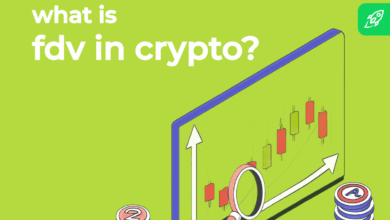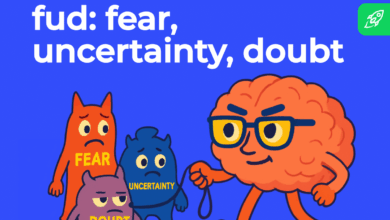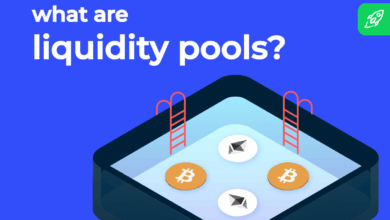Which Layer 2 Solution Benefits Most from the Ethereum Merge?

Some Ethereum fans refer to the Merge as a ‘triple halvening’. This is because Ethereum’s yearly inflation rate is expected to drop from 4.3% to 0.43%.
Scalability issues remain one of blockchain’s main issues. The term was first coined by Vitalik Buterin, co-founder of Ethereum, to illustrate the continuing tension between three components a high-functioning blockchain network should have: decentralisation, scalability, and security. The trilemma refers to the assumption that blockchain networks can only achieve two of these three components efficiently.
Picture the trilemma as a pyramid. The bottom layer is security. No crypto project can operate efficiently without security. Moving to the second layer or decentralisation – there is no central authority and no single point of failure subsequently. The third layer is scalability. In other words, a secure and decentralised blockchain needs to function smoothly to ensure user satisfaction.
As technology advances, one of the main challenges for blockchain technology remains how networks can cope with a growing volume of transaction data and without sacrificing security or performance. The additional rise of decentralised applications added up to the complexity of the problem.
In the summer of 2022, the Ethereum network reached a point where it faced a scalability challenge as it processed approximately 500,000 transactions per day or 30 transactions per second. At this point, the scalability trilemma occurred because scalability couldn’t be achieved without compromising security or decentralisation.
Like with traditional computer networks, blockchain protocols have a limited capacity tolerance. There is only so much traffic they can take before congestion takes over. Subsequently, traffic overload results in high transaction fees, especially when it comes to a large blockchain platform based on smart contracts such as the Ethereum network.
Let’s compare it to a centralised system of payment such as Visa. Visa’s payment system is capable of processing up to 150 million transactions per day and 65,000 transactions per second. Those are magnitudes ahead of what Ethereum or any other blockchain platform is capable of. However, remember that this is a centralised system, and blockchain seeks to obtain decentralisation next to security and scalability as well.
There are no quick fixes for the trilemma. However, an option to mitigate the tensions between decentralisation, scalability, and security emerged in the form of off-chain processing using Layer 2 solutions.
As the name suggests, Layer 2 means that it sits on top of another layer – Layer 1. Layer 1 refers to the main blockchain, and Layer 2 is an additional layer or a whole other network on top of the main blockchain.
By moving transactions off the main blockchain, Layer 2 appeared as good medicine for blockchain’s scalability and network congestion illness. For example, blockchain gaming includes mainly high-frequency transactions for low-value sums. These transactions are taken from the Ethereum main chain to the second execution layer and processed there.
Therefore, Ethereum is the main chain that includes a broad number of transaction data volumes on a daily basis that could, if not resolved, amount to network congestion. Since the option is not to compromise security or decentralisation, Ethereum Layer 2 solutions emerged such as Polygon, Arbitrum or Loopring.
In addition to taking the load off the Ethereum mainnet, a Layer 2 scaling solution includes other benefits such as faster transactions, maintained security and reduced gas fees.
Layer 2 scaling solutions within the Ethereum ecosystem are deemed as a significant tool kit for solving scaling issues. Even though there are a number of different Layer 2 scaling solutions, they all share a common objective: to achieve scalability and take the load off the main Ethereum blockchain.
The Ethereum Merge refers to a network update to transition Ethereum from Proof-of-Work (PoW) to a Proof-of-Stake (PoS) consensus mechanism. The Ethereum’s PoS Beacon Chain merged with the Ethereum mainnet to move the entire blockchain to new PoS validator nodes.
A consensus mechanism basically refers to the underlying principles of block verification in the blockchains. It lays down the conditions that need to be met by nodes and validators so that new blocks can be added.
Since its launch, Ethereum has been secured with a PoW consensus mechanism that typically requires hardware processing power to resolve complex mathematical equations for new blocks to be added to the Ethereum blockchain.
In September 2022, the Ethereum network switched to a PoS consensus mechanism and left the PoW mechanism behind. The long-awaited Merge was finally processed and transformed Ethereum into a green blockchain. In other words, it enabled Ethereum to reduce its energy consumption by approximately 99.95%.
Just a tiny comparison; before implementing the PoS consensus mechanism, Ethereum had about the same carbon footprint as the entire nation of Finland.
In fact, according to Vitalik Buterin, the Merge is the first phase among 5 key phases that will bring Ethereum to its desired finish line – 100,000 transactions per second. Therefore, the Merge isn’t the grand finale as many assumed; it is just the beginning.
In addition to the above-mentioned benefits and going green, the transition to PoS removed the requirement for mining nodes to compete for block rewards. Instead, node operators are required to stake 32 Ether (ETH) as collateral to become network’s validators and earn rewards accordingly.
The merge is supported by a higher degree of decentralisation since it lowered hardware requirements for node operators, increased security through client diversity and provided faster transaction confirmations. However, the overall speed stayed about the same, but as we already mentioned, the Merge is just one phase in Ethereum’s big plan.
There is one other thing; the Merge introduced the ability to add more scaling solutions such as sharding. When it comes to the future of Layer 2 scaling solutions, the Ethereum upgrade raised a few questions.
When Ethereum implemented the upgrade, a number of industry insiders and experts have been debating over how it will impact Layer 2 solutions. In other words, it has been unclear whether they will remain or whether their time is up.
The implementation of the Merge is said to boost performance of the blockchain, making a part of the community assume that the future of Layer 2 scaling solutions is up in the air.
Let’s chase these assumptions down. The Ethereum Foundation made it clear that Layer 2 is here to stay. The Ethereum ecosystem is firmly linked to its Layer 2 scaling and it is still the only answer to the blockchain trilemma.
Contrary to the belief that the Merge means an end to Layer 2, the new version of Ethereum and Layer 2 are not mutually exclusive. They support each other and co-exist in a symbiotic relationship.
The Merge and the current version of Ethereum are still unable to resolve some challenges, such as network congestion and high gas fees, without the use of Layer 2. In fact, the Merge is thought to enhance the performance of Layer 2 which amounts to a reciprocally profitable relation.
Now that we have explained that Layer 2 still has a future within the Ethereum ecosystem, let’s talk facts and see how different Layer 2 solutions performed after the Merge. Here is an analysis of the most promising Layer 2 projects based on their market dominance, user adoption and potential future applications.
Polygon is a Layer 2 solution for Ethereum that uses different technologies to improve the blockchain’s scalability. Since it relied on PoS validators, it soon became one of the fastest solutions on the crypto market.
Right before the Merge, from June to August 2022, Polygon transactions and unique active wallets followed the same market trend as the Ethereum blockchain, primarily driven by pre-merge thrill. In September 2022, the month when the Merge happened, Polygon faced a sharp decrease as transactions went down 33%, along with unique active wallets going down 17%.
Even though the same trend continued, and Polygon has been steadily declining, many industry experts think that Polygon and the new version of Ethereum will go along just fine. The Merge has not impacted significant aspects of Polygon such as bridges, staking and smart contracts.
Polygon itself reported that the Merge would enable it to cancel around 60,000 tons of carbon footprint, transforming it into an environmentally friendly Layer 2 solution.
Optimism is a Layer 2 solution in which optimistic roll-ups manage multiple transactions into a single transaction and send it to the main chain for processing. The novel technique is used to utilise data compression and reduce transaction fees on the Ethereum blockchain.
This solution is known as a top crypto winter performer – since the beginning of 2022, it is still in an ascendent trend even though the transaction count and unique active wallets went down. In fact, it was one of the best-performing protocols in July and August 2022 as it saw a 228% increase in total value locked (TVL). In September 2022, it saw a minor decrease of 2% which confirmed that Optimism is one of the best-performing protocols on the crypto market.
High performance was fueled by the assumption that Optimism could gain from the Merge because of Ethereum’s ‘Rollup-Centric Roadmap’ which is used to transform the main blockchain into a settlement and data availability layer by delegating scalability to Layer 2 roll ups due to the ‘danksharding’ technique. Danksharding means splitting a blockchain network into multiple smaller networks.
Arbitrum, a Layer 2 solution that improves Ethereum’s smart contracts’ scalability and provides extra privacy features, is Optimism’s market rival in top performance. Similar to Optimism, Arbitrum performed quite well during the crypto bear market. It has been in an ascendent trend since the beginning of the last year.
This Layer 2 solution logs transaction batches submitted to the main chain and executes them on scalable side chains using a technique known as transaction rollup. Taking into account that Arbitrum used to be faster than the PoW version of Ethereum, it remains a high-performing solution after the Merge as well.
Arbitrum introduced the Arbitrum Nitro upgrade that aids in settling a large volume of transactions in fewer blocks which results in significant savings.
Arbitrum’s transaction count has been rising and managed to increase 54.7% from August to September. In September 2022, its TVL increased by 2% over the previous month.
Loopring is an Ethereum-based scaling protocol for decentralised exchanges (DEXs) that provides high-speed transactions and low costs. The protocol utilises Zero-Knowledge Proof (ZKP) technology that bundles a large volume of transactions to obtain efficiency.
Loopring implemented the GameStop marketplace. Even though it entered the NFT scene late, it managed to become the 10th most-traded marketplace and threatened OpenSea’s dominant position in the crypto market. As for the Merge, Loopring experienced a descending trend as it decreased by 15.8% post-Merge.
The Ethereum sidechain Ronin was designed as a good fit for the Axie ecosystem. Within the gaming environment, Ronin enabled millions of microtransactions and low fees.
Similar to Polygon, Ronin experienced a downturn as it decreased by 51% since August 2022. Notably, the sidechain decreased by 30% in a short amount of time – from September to September 15. After the Merge, its value started slowly increasing.
Immutable X, a Layer 2 scaling solution built on top of the Ethereum network, is used to address the scalability problem of Ethereum-based non-fungible tokens (NFTs). It is well-known for its use in the GameFi sector and for the fact that it provides rapid transaction confirmation, high transaction throughput, low costs and scalability without sacrificing security.
By using Zero-Knowledge (ZK) Rollup technology, Immutable X can execute more than 9000 transactions every second. Additionally, it enables a carbon-neutral NFT marketplace by forming a business alliance with environmental-friendly companies Cool Effect and Trace.
When it comes to its market status, Immutable X turned out to be a top performer during the crypto bear market as well. Even though transactions declined 1.1%, its NFT trading volume increased by 101% after the Merge.
Boba Network, previously known as OMGX, is another Ethereum-based scaling solution that is used to cut transaction and computation costs, increase the capabilities of smart contracts and enhance Ethereum transactions. Boba Network relies on the Optimistic Rollup technology.
If we take a look at Boba Network’s transactions count, it can be concluded that it remained in the same range after a sudden decrease of 42% in September 2022. The TVL experienced a descending trend as it decreased by 35%.
Obviously, the top three performers, according to the presented numbers, in the PoS transition period are Optimism, Arbitrum, and Immutable X. These crypto winter survivors experienced ascending periods right after the Merge when other scaling solutions experienced a downturn.
Even though the Merge was implemented successfully, Ethereum is still on the path to reaching the final point as forecasted by Buterin. There are still four phases to go through until we get to experience the final product.
The Merge had a varying impact on different Layer 2 scaling solutions. The pre-Merge status and the post-Merge effects have not been quite the same. Right before the Merge the hype boosted the transaction volume, total value locked, and other parameters of almost all Layer 2 solutions, yet right after the Merge most of them decreased.
The crypto market is still in its bear phase, but the NFT and crypto gaming markets are on the rise. Ethereum’s merge came at the right time, but it still has a long way to go. Ethereum needs to be prepared to handle fresh flows and technological demands. Innovations in the crypto world and technology, in general, are moving quickly.
Regardless of market performance, it is important to establish that the Merge is not an end to Layer 2 scaling solutions. On the contrary, Layer 2 will serve as an execution layer while developing and introducing upgrades in cooperation with the Ethereum mainnet.
As mentioned earlier in the text; Ethereum and Layer 2 live in a symbiotic relationship. The new version of Ethereum is more progressive in providing high transaction capabilities, but to achieve a desirable level of security and decentralisation, the main blockchain still needs its second layer.





